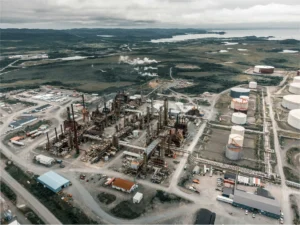Biodegradable Erosion Control Matting, the Clean Green Choice for Erosion Control
Productive land and fertile soil is the most significant geo-resource. Every year, there is a loss of approximately 24 billion tonnes of this non-renewable resource. A natural phenomenon occurring over the millennia due to climatic and geological changes, soil erosion is more of a global threat now.
Fertile soil loss is primarily through degradation and erosion. There are also the factors of no protective vegetation, forest clearing, and overgrazing. The maximum erosion usually occurs in the name of development and urbanization.
All said and done; erosion wreaks havoc on the environment. Some available solutions to minimize soil erosion include reforestation, gully banks, contour cultivation, bench-terracing, crop rotation, forested slopes, and so on.
The only solution that is environmentally-friendly and efficacious is biodegradable erosion control matting.
Table of Contents
What is erosion control matting?
Today, geosynthetics are indispensable and a critically important element of geoenvironmental and civil engineering. They provide temporary and long-term solutions to erosion in the form of erosion control blankets, geotextiles, turf reinforcement mats, and geocellular confinement systems.
Erosion control matting or erosion control blankets are biodegradable geosynthetics that fight soil erosion and enhance soil stabilization. They are a quick and cost-effective alternative to traditional synthetic solutions.
Key Features of Erosion Control Matting:
The biodegradable erosion control geosynthetics find global use owing to a lot of factors, some of which are:
- Durability and absorbency
- Simple installation
- Installation is not time-consuming
- Economical and sustainable solution.
- 100% biodegradable and hence environmentally-friendly and safe
- Help in the growth of vegetation, providing maximum root anchorage.
- Reduce water and wind stressors.
The erosion control blankets help restore erosion-prone areas, add stability to slopes, reduce water flow, protect drains, and most importantly, support vegetation growth.
What are the different types of erosion control matting?
The type of erosion control blanket you need vastly depends on your worksite, project, climate, and landscape. Some are semi-permanent and degrade over time, while others are permanent and excellent for long-term applications. The erosion control blankets also come with varying thicknesses and a blend of fibers.
Jute matting and coir matting are the most common biodegradable erosion control matting systems available today.
Jute matting comprising of unbleached jute fibers is the ultimate choice in projects with mild-to-moderate slopes and low-to-medium flow rates. It helps with slope stabilization and supports vegetation. 100% biodegradable, the jute matting fibers hold the soil in place and permit plants to grow through, fully decomposing over time. With a loose and soft yarn twist, big strand diameter, and high stretch elasticity, the jute matting has a high water absorption rate.
Coir matting comprises of non-chemically treated coir fibers and is a more robust biodegradable matting system suitable for long-term projects. With a high lignin content, the coir matting is resistant to rapid decomposition and has a higher tear resistance. Ideal for dry land and hydraulic applications, the coir matting helps with stabilization and reinforcement on riverbanks, trenches, streams, and slope stabilization.
For all your jute matting and coir matting needs:
Ocean Geosynthetics offers a complete range of erosion control bioengineering products. We are committed to conserving the environment, and our jute and coir erosion control blankets are subject to stringent quality controls and exceed industry standards.
Ocean Geosynthetics, the Natural Choice for Biodegradable Erosion Control Matting Contact us to discuss options viable for your worksite.



